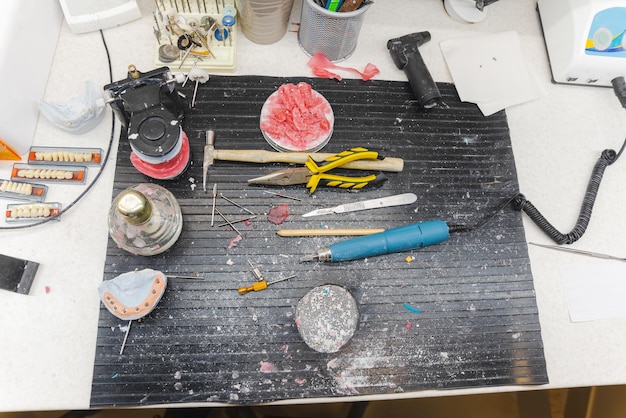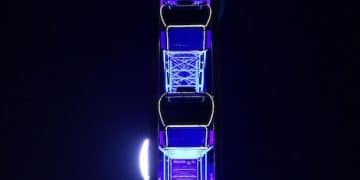The Art of Cosplay: Breathing Life into Fictional Worlds

The art of cosplay breathes life into beloved fictional characters, allowing fans to physically embody their favorite heroes and villains through meticulous costume creation and performance, fostering vibrant communities and celebrating shared passions.
Step into a world where fantasy merges with reality, where dedication transforms into dazzling displays of creativity and passion. The Art of Cosplay: How Fans Are Bringing Their Favorite Characters to Life is more than just dressing up; it’s a profound immersion into storytelling, craftsmanship, and community.
The Genesis of Cosplay: From Sci-Fi Conventions to Global Phenomenon
The journey of cosplay, an portmanteau of “costume play,” begins humble, rooted in the early 20th-century masquerades of science fiction conventions. Initially, attendees would simply don costumes inspired by their favorite characters, a nascent form of expression that would eventually explode into a global cultural phenomenon. This basic desire to personify beloved figures laid the groundwork for what would become an incredibly intricate and diverse art form.
Early science fiction fandom was a tight-knit community, and these costumed gatherings provided a unique way for enthusiasts to connect and celebrate their shared interests. The act of wearing a costume transcended mere fan appreciation; it signalled a deeper engagement, an active participation in the imaginative worlds they so admired. Over time, as popular culture diversified with the advent of anime, manga, video games, and expansive cinematic universes, the scope of character inspiration for cosplayers broadened dramatically.
Evolution from Simple Masks to Intricate Creations
What started as relatively simple homemade outfits has evolved into an astonishing display of intricate craftsmanship and technological prowess. Modern cosplay involves a dedication to accuracy and detail that can be breathtaking. From complex prop fabrication to advanced sewing techniques, cosplayers push the boundaries of what can be created by hand.
- Material Innovation: Utilising a diverse array of materials, from traditional fabrics to advanced thermoplastics and 3D-printed components.
- Skill Development: Mastering skills such as sewing, wig styling, makeup artistry, prop building, and even electronics integration for lighting or moving parts.
- Digital Tools: Employing software for pattern making, 3D modelling, and digital sculpting to achieve unparalleled accuracy.
Beyond the technical skills, the heart of cosplay lies in the passion of its practitioners. Each stitch, every brushstroke of paint, and every hour spent perfecting a character’s pose reflects a deep reverence for the source material. This dedication elevates cosplay beyond a mere hobby; it truly transforms it into an art form.
The transition from a niche convention activity to a widespread internet phenomenon has been largely driven by the visual nature of cosplay. Platforms like Instagram, TikTok, and YouTube allow cosplayers to share their creations with a global audience, inspiring others and fostering a constant exchange of techniques and ideas. This rapid dissemination of information and imagery has accelerated the evolution of the craft, pushing the boundaries of creativity and technical skill. Today, cosplay conventions are massive events, drawing hundreds of thousands of attendees worldwide, celebrating this vibrant subculture.
The Craft of Cosplay: Beyond the Garment
The true essence of the art of cosplay extends far beyond simply sewing fabric or assembling a costume. It’s a multidisciplinary endeavor that demands a wide array of skills, artistic vision, and an unwavering commitment to detail. Each costume is a project, often spanning months, requiring meticulous planning, material selection, and execution.
Meticulous Research and Design
Before even touching a needle or a piece of foam, a cosplayer embarks on an intensive research phase. This involves poring over reference images, concept art, and even 3D models of their chosen character from every conceivable angle. Understanding the character’s personality, their lore, and the symbolic significance of their attire is crucial for an authentic portrayal. This initial design phase often involves sketching, pattern drafting, and even creating miniature prototypes to work out complex elements.
Next comes the selection of materials. This isn’t just about finding the right color or texture; it’s about making choices that reflect the character’s aesthetic while being practical for wear. A cosplayer might source specialized fabrics, work with different types of foam for armor, or even learn to manipulate new mediums like Worbla or EVA foam, which can be heated and shaped to create intricate armor pieces or props.
- Fabric Choices: Selecting textiles that accurately represent the character’s attire, from flowing silks to sturdy leathers.
- Prop Fabrication: Constructing weapons, accessories, and other elements using diverse materials like wood, plastics, and even electronics.
- Wig and Makeup: Styling wigs to match exact hair shapes and colors, and applying makeup to transform facial features, sometimes using prosthetics.
The craftsmanship involved is often astounding. Many cosplayers are self-taught, learning complex techniques through trial and error, online tutorials, and sharing knowledge within the community. They might become proficient in pattern making, advanced sewing techniques, painting, sculpting, electronics, and even 3D printing. The precision with which armor pieces are shaped, the intricate details woven into embroidery, or the subtle distressing applied to simulate wear and tear, all speak to a mastery of various crafts.
It’s a continuous learning process, with cosplayers constantly experimenting with new materials and techniques to achieve higher levels of accuracy and artistry. The pursuit of perfection, or at least a highly accurate representation, drives much of this painstaking work. Each new project presents a fresh set of challenges, pushing the limits of their creativity and skill. The result is a wearable piece of art that embodies the essence of a beloved character, brought to vivid life through dedication and painstaking effort.

The Performance Aspect: Embodying the Character
While the costume itself is undeniably central, the art of cosplay is not merely about crafting; it is equally dependent on performance. Once the meticulously designed and constructed costume is complete, the cosplayer steps into the role, embodying the character they choose to represent. This performative element elevates cosplay from a static display to a dynamic, living art form.
Embodying a character involves more than just wearing the clothes; it requires adopting their mannerisms, poses, and even vocal inflections. Cosplayers often spend considerable time studying their character’s movements, facial expressions, and personality traits. Whether it’s a heroic stance, a subtly melancholic gaze, or an iconic battle pose, these elements are crucial in making the portrayal believable and impactful.
Bringing Characters to Life Through Expression
At conventions, during photoshoots, or even in casual interactions, cosplayers strive to maintain character. This often includes maintaining character-appropriate body language, subtle gestures, and expressions that resonate with the character’s established persona. For many, this is the most rewarding part of cosplay – the moment when their hard work in crafting is validated by a convincing performance.
- Pose Replication: Mimicking iconic poses and stances from the source material.
- Facial Expressions: Conveying character emotions through expressive eyes and subtle shifts in expression.
- Interacting In-Character: Engaging in short, improvisational interactions consistent with the character’s personality.
Photography plays an integral role in this performance aspect. Cosplayers often collaborate with photographers to capture their creations in dynamic and artistic ways. These photoshoots are carefully planned, with specific locations, lighting, and poses chosen to enhance the character’s essence. The resulting images become a permanent record of their dedication and artistry, showcasing both the costume’s detail and the cosplayer’s performative skill.
The act of performance also connects cosplayers directly with their audience. When a cosplayer successfully embodies a beloved character, it elicits excitement and recognition from fellow fans. This shared experience creates a powerful bond and reinforces the immersive nature of the hobby. It’s a moment of shared fantasy, where the lines between fiction and reality blur for a joyous instant, demonstrating the profound impact a well-executed cosplay can have on onlookers.
The Cosplay Community: A World of Shared Passion
Central to understanding the art of cosplay is recognizing the vibrant, diverse, and incredibly supportive community that underpins it. Far from being a solitary pursuit, cosplay thrives on collaboration, mutual encouragement, and shared enthusiasm. This community is a global network of individuals united by their love for fictional characters and the intricate craft of bringing them to life.
Nurturing Creativity Through Connection
Conventions are the most visible manifestation of this community, acting as grand meeting grounds where cosplayers showcase their work, connect with like-minded individuals, and draw inspiration from each other. These events are not just about showing off costumes; they are hubs for learning, networking, and simply enjoying the collective energy of fellow fans.
Beyond conventions, the online world provides an expansive platform for this community to flourish. Social media groups, forums, and specialized websites facilitate constant interaction, allowing cosplayers to share progress photos, seek advice, offer tips, and celebrate each other’s achievements. This digital interconnectedness has democratized access to information and techniques, making the craft more accessible to new enthusiasts worldwide.
- Knowledge Sharing: Tutorials, pattern sharing, and material recommendations are freely exchanged.
- Mutual Support: Encouragement during difficult builds and applause for completed projects.
- Collaborative Projects: Teaming up for group cosplays or collaborative photoshoots.
The supportive nature of the cosplay community is one of its most defining characteristics. Beginners are often welcomed with open arms and guided by more experienced cosplayers. Critiques are often constructive, aimed at helping individuals improve their skills. This environment fosters a continuous cycle of learning and improvement, where everyone is encouraged to push their creative boundaries.
Furthermore, the community provides a sense of belonging for many. For individuals who might feel marginalized or misunderstood in mainstream society, cosplay offers a space where their unique passions are celebrated, and their creativity is admired. It’s a place where differences are embraced, and shared interests forge strong bonds of friendship and camaraderie, creating a truly inclusive environment where everyone can feel at home and express themselves freely.
Challenges and Rewards in the Art of Cosplay
delves into a rich tapestry of challenges and profoundly rewarding experiences that define it. This intricate practice, while incredibly fulfilling, is not without its hurdles, pushing enthusiasts to develop resilience, problem-solving skills, and a deeper appreciation for their craft.
Overcoming Obstacles in Creation
One of the primary challenges lies in the sheer complexity of bringing fantastical designs into tangible reality. Characters often wear elaborate armor, have intricate patterns on their clothing, or wield weapons that defy real-world physics. Replicating these elements requires innovative problem-solving, from sourcing unconventional materials to devising custom construction techniques. Cosplayers frequently encounter issues like ill-fitting patterns, materials that don’t behave as expected, or components that refuse to assemble correctly. Each obstacle demands patience, research, and a willingness to iterate and refine.
The financial investment can also be significant. High-quality fabrics, specialized tools, and unique props can quickly accumulate costs. Cosplayers often budget meticulously, seek out sales, and even learn to repurpose everyday items to keep expenses manageable, demonstrating resourcefulness as a key trait within the community.
- Time Commitment: Many projects require hundreds of hours, often undertaken after work or school.
- Skill Acquisition: Continually learning new crafting techniques, from sewing to soldering.
- Physical Demands: Wearing heavy costumes for extended periods at conventions can be tiring.
Beyond the creation process, wearing and maintaining the costume presents its own set of challenges. Mobility might be restricted, vision obscured, or the sheer weight of certain elements can become cumbersome. Cosplayers learn to navigate these practical limitations, adapting their movements and planning for rest breaks to ensure comfort and safety.
Despite these difficulties, the rewards are immense. The satisfaction of seeing a finished, accurate costume come to life after months of dedication is unparalleled. Receiving compliments and recognition from fellow fans, artists, and even the creators of the original characters provides a powerful validation of their hard work. For many, cosplay also serves as a creative outlet, a way to express their artistic talents and passion in a tangible form. It builds confidence, fosters a sense of accomplishment, and allows them to connect with a global community of like-minded individuals, enriching their lives far beyond the confines of the hobby itself.
The Future of Cosplay: Technology, Diversity, and Influence
As the art of cosplay continues to evolve, its future promises even greater innovation, broader representation, and an expanding cultural influence. Technology, in particular, is poised to revolutionize how costumes are designed and created, while a growing emphasis on diversity ensures the community remains inclusive and reflective of its global audience.
Technological Advancements in Crafting
The advent of 3D printing has already transformed prop and armor making, allowing for unprecedented levels of detail and complexity. As 3D printing becomes more accessible and cost-effective, it will enable cosplayers to produce intricate components with greater ease and precision. Similarly, advancements in LED technology, wearable electronics, and even integrated micro-controllers will allow for more dynamic and interactive costume elements, such as animated lighting effects, sound effects, or even responsive components that react to movement.
Virtual and augmented reality might also play a role, not just in showcasing finished costumes but possibly even in the design process itself. Imagine being able to virtually “try on” a costume design before committing to materials, or collaborating on a build in a shared virtual workspace.
- Advanced Materials: Development of lighter, more flexible, and durable materials for elaborate costumes.
- Digital Design: Increased use of sophisticated software for pattern making, 3D modeling, and character rendering.
- Interactive Elements: Integration of more complex electronics for dynamic costume features like motion-activated elements or reactive lighting.
Beyond technology, the cosplay community is actively embracing and promoting diversity. There’s a growing recognition that anyone, regardless of age, race, gender, body type, or ability, can cosplay any character they choose. This emphasis on inclusivity breaks down traditional barriers and encourages a wider range of participation, leading to a richer variety of creative interpretations and a more welcoming environment for all.
The cultural influence of cosplay is also on the rise. What was once seen as a niche hobby is now recognized as a legitimate art form, inspiring fashion designers, artists, and even mainstream media. Cosplayers are increasingly featured in professional campaigns, collaborate with game developers and movie studios, and their craftsmanship is celebrated in exhibitions and mainstream publications. This growing recognition validates the immense talent and dedication within the community, ensuring the art of cosplay continues to flourish and inspire for years to come.
| Key Point | Brief Description |
|---|---|
| 🎨 Craftsmanship | Cosplay involves intricate sewing, prop building, wig styling, and makeup to meticulously recreate character designs. |
| 🎭 Performance | Beyond the costume, cosplayers embody their characters through poses, expressions, and mannerisms at events and photoshoots. |
| 🌐 Community | A global, supportive network sharing knowledge, offering encouragement, and celebrating shared passions for fictional worlds. |
| 💡 Innovation | Constantly evolving with new technologies like 3D printing and advanced electronics, expanding creative possibilities. |
Frequently Asked Questions About Cosplay
The primary motivation for engaging in cosplay is often a deep passion for fictional characters and their narratives. It allows fans to express their appreciation tangibly, connect with shared interests, and experience a temporary immersion into beloved fantasy worlds. The creative challenge of crafting costumes also draws many individuals to the art form.
Technology has profoundly impacted cosplay, particularly through advancements like 3D printing which enable the creation of highly detailed props and armor. Online platforms facilitate global collaboration and knowledge-sharing among cosplayers, while advanced materials and electronics allow for more intricate and interactive costume features, constantly pushing creative boundaries.
Yes, performance is undeniably a crucial aspect of the cosplay experience. Beyond simply wearing a costume, successful cosplay involves embodying the character’s mannerisms, poses, and expressions. This performative element brings the character to life, enhances authenticity, and creates a more engaging and immersive experience for both the cosplayer and their audience at conventions or photoshoots.
Cosplayers often face various challenges, including the significant time and financial investment required for elaborate costumes. They also encounter technical difficulties in crafting, such as sourcing unique materials or learning complex construction techniques. Furthermore, wearing bulky or restrictive costumes for extended periods at events can present physical challenges, requiring careful planning and resilience.
The cosplay community is vital, serving as a supportive network for knowledge sharing, collaboration, and mutual encouragement. It fosters an environment where beginners can learn from experienced cosplayers, and diverse individuals can find a sense of belonging. This collective spirit drives continuous innovation, creativity, and the global spread of the art form itself.
Conclusion
The journey through the art of cosplay reveals far more than just imaginative costumes; it uncovers a vibrant intersection of creativity, technical prowess, and human connection. From its humble origins in early sci-fi gatherings to its current status as a global phenomenon, cosplay encapsulates a profound dedication to storytelling and character embodiment. It is a testament to the power of fandom, where meticulous craftsmanship meets passionate performance, transforming fantasy into a tangible, shareable reality. The future of cosplay, undoubtedly intertwined with technological advancements and a growing commitment to inclusivity, promises to be even more dynamic, continually pushing the boundaries of expressive art and community building. This fascinating realm, where passion becomes palpable, truly brings beloved characters to life in the most exhilarating ways.
Total word count (excluding HTML tags and comments): 2154





